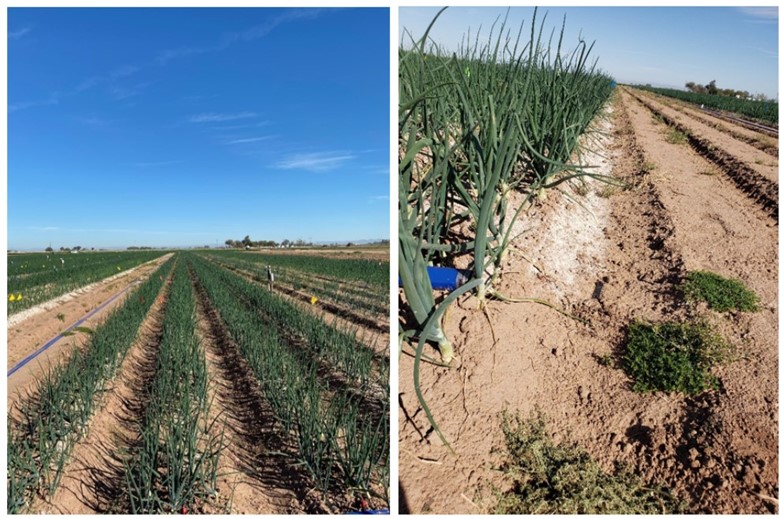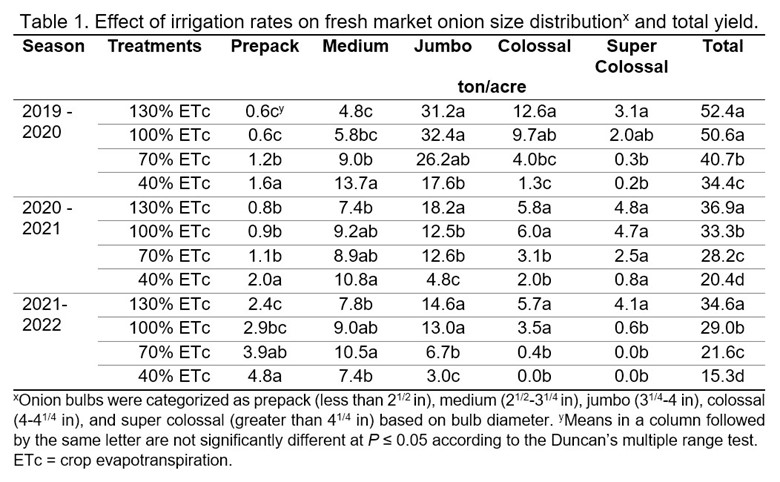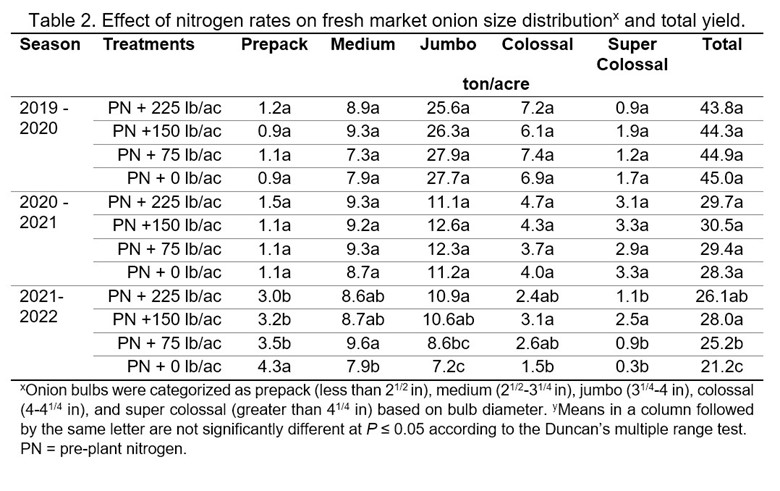Note: This is part of a Research Update series that highlights projects funded by the California Department of Food and Agriculture (CDFA) Fertilizer Research and Education Program (FREP) annual grant program.
Project Title: Assessing Drip Irrigation and Nitrogen Management of Fresh Onions Produced in California Low Desert
Project Leader: Jairo Diaz, Director, University of California – Desert Research and Extension Center
Project Status: Complete
Project location: Imperial County
Overview: This FREP-funded project evaluated the response of onions to drip irrigation regimes and compared onion production under different nitrogen (N) fertilizer application rates. Project results indicated that a switch from furrow to drip irrigation technology and accounting for residual soil nitrate can lead to notable reductions in irrigation water use and N fertilizer application rates.
Background:
Imperial County is one of the major onion production regions in CA with over $82 million in onion production in 2022. Agriculture is the largest water user in the Imperial County, where the Colorado River Basin (CRB) is the main source of irrigation water. However, the two largest reservoirs in CRB are at historically low water levels due to persistent drought and overallocation. Another issue facing growers in this region is salinity; to prevent soil salinization and enhance agricultural production, growers apply excess irrigation water to leach salts from the root zone. Thus, it is important to explore best management practices to conserve water and minimize nutrient export. The main goal of this project was to evaluate the effects of irrigation management and N fertilization rates on yield and quality of fresh onion bulb production in arid regions using slightly saline water.
Approach
The project team performed annual field trials at the University of California Desert Research and Extension Center in Holtville, CA. The experiment was carried out with drip irrigation treatments and four N-fertilization rates. Irrigation treatments were set up as: 40, 70, 100, and 130% of crop evapotranspiration (ETc) and N treatments were pre-plant; pre-plant plus 75 lbs. N per acre; pre-plant plus 150 lbs. N per acre; and pre-plant plus 225 lbs. N per acre. The research team sampled soil at different times (pre-plant, mid-season, postharvest), measured onion yield and quality at harvest, and analyzed soil and tissue samples for N concentration.

(Left) The onion irrigation and N rate trial at the University of California Desert Research and Extension Center, Holtville, CA. (Right) Accumulation of salt can be seen in the high irrigation treatment plots.
Findings
Onion yields and bulb size distribution responded to irrigation rates and maximum yields were obtained in the 130% ETc treatment. The highly stressed irrigation treatment (40% ETc) had the lowest yield (Table 1). Onion size distribution, total yield, and firmness did not respond to N rates when total N available in the top foot of the profile ranged from 104 to 353 pounds per acre; this shows the importance of pre-plant soil sampling and analysis and adjustment of in-season N application rate accordingly. Onion size distribution, total yield, firmness, and brix responded to N rates in a field with only 54 pounds per acre of total N available in the top foot (Table 2). In this study, leaf temperature differential measures detected early water stress responses; however, water deficit regimes did not significantly affect photosynthesis activity.


Impact
This project highlights thathigh onion yields and large high-value sizes can be produced with 24 to 26 in of water per acre using drip irrigation, which is less than half the amount of water (typically about 60 in) required to grow high yielding onions with furrow irrigation. If 80% of fresh market onion fields switched from furrow to drip irrigation there would be a potential savings of up to 8,000-acre foot of water per season. Additionally, results indicated that growers can reduce N fertilizer applications by adopting drip irrigation, split fertigation techniques, and by accounting for N available in the top foot of soil.
This project also strengthened collaboration between University of California Cooperative Extension and local and regional colleges by offering opportunities for student participation. College internship opportunities provided new knowledge and career pathways to borderlands, first generation, and underrepresented students in agriculture. College students developed skills in irrigation and nutrient management research methods and students gained better understanding of onion production, handled research equipment, and got exposed to research protocols.
After completion of the first field trial, the research team donated about 750 pounds of onions to Imperial Valley Food Bank in May 2020. This donation helped the local communities in need during the midst of COVID 19 restrictions and challenges.
To learn more about this project and other current and completed FREP projects please visit: https://www.cdfa.ca.gov/is/ffldrs/frep/Research.html


